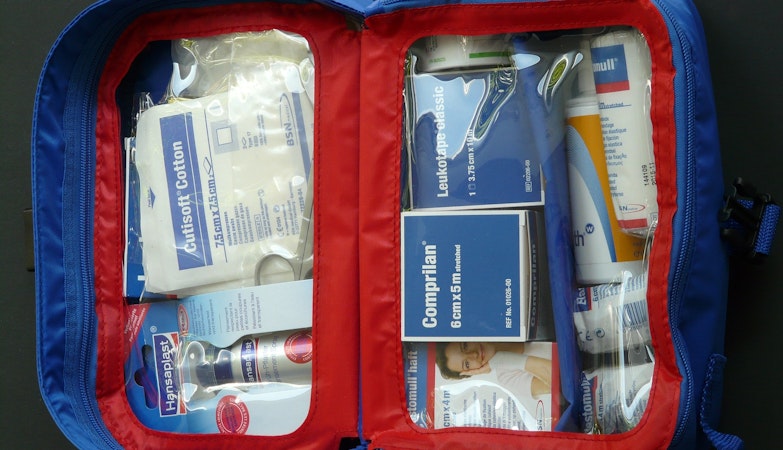There should be no confusion about N95 respirators providing protection against Covid-19 infection. If worn properly and consistently, they prevent inspiration and expiration of the SARS-CoV2 virus that causes Covid-19, end of story, full stop. This is not my opinion, it is my “expert” opinion. Unlike most of the internet gurus and purveyors of conspiracy theories, I actually have qualifications and training related to respiratory protection. I have certificated training from both OSHA and the American Society of Safety Engineers. I specified, fit tested and trained people for respiratory protection from N95 respirators, through full-face filter respirators and Self Contained Breathing Apparatus as a Safety Manager for a major chemical company. I also trained in appropriate biological respiratory protection as an EMT.
The N95 Respirator
These are true respirators not just masks. When worn according to the instruction on the box they provide very effective protection against airborne pathogens, toxic dust particles, soot, and toxic mist droplets. They also provide effective protection against inhalation of radioactive dust particles. They do not provide protection against poison gasses such as chlorine, ammonia or carbon monoxide. Unless you anticipate a poison gas attack or a chemical spill scenario, an N95 is all you need. They are cheap and easy to have with you. While they are classified as “disposable” they can be decontaminated with exposure too UV light including sunlight. They should be stored in plastic bags when not on use.
The reason that the CDC and other agencies did not emphasize N95 respirators at the start of the pandemic is because (1) they wanted to hoard enough for medical professional and (2) there was already a shortage because China had bought up huge quantities before letting the world know about Covid-19. You saw everyone in China wearing N95 masks back in March. China’s draconian mandating of wearing mask brought the pandemic under control much faster than in other countries. While I would not advocate such a mandate in a free country, that should have been a strong recommendation for Americans from the start*. I had about twenty-five N95’s at home in January and managed to buy one more box of twenty in late March. N95 respirators are the gold standard for use by medical professionals who are exposed to airborne pathogen all day that should tell you all you need to know.
Some people claim that they can’t breathe while wearing these respirators. Unless you have a very serious respiratory illness, this is mainly psychological. I trained employees who wore these masks continuously for hours of hard work in hot conditions. At 79-years of age I wear N95’s throughout full workouts at the fitness center.
Face Masks
Since the professionals and smart survivors had already grabbed up the available N95’s a number of alternative masks came into use. Common blue surgical mask are designed to prevent pathogens from the mouth and nose of surgeons and other ER and OR personnel from infecting patients who are in an otherwise sterile environment. They are not intended as “respiratory protection’ but provide limited protection against inspiration of pathogens. Some versions have a double-layer that provides better protection. Soft cloth mask in various designs seem to be the most popular choice. If worn tightly against the face, these should be good enough for protection against coughs, and breaths carrying at virus. Those with a double layer of cloth are best
Bandannas and Neck Gators
In my books I recommend carrying a bandanna as an “everyday carry” items for use as a bandage, tourniquet, and last resort respirator, but it is no substitute for an N95 or even a good cloth face mask. Neck gators are also inadequate. The best I can say for them is that they are BTN (better than nothing) in an emergency. They may meet the letter of the “face mask required” regulation, but you are fooling yourself if you think they are as effective as cloth masks or true respiratory.
Gas Masks and Half-Face Filter Respirators
While these devices are effective, they are bulky, uncomfortable and difficult to fit properly, while offering no more effective protection than the light weight N95 respirators. Gas masks are for gas! Unless you live down wind of a hazardous chemical facility they are a waste of money.
Conclusion
Respiratory protection is a very effective way to avoid contracting Coved-19, and any other airborne pathogen. N95 respirators are the best choice for respiratory protection, but cloth masks and surgical masks are certainly better than no protection when N95’s are unavailable. As the pandemic subsides, I will be restocking my survival supplies with N95 respirators. So should you.
*If the government had prohibited the wearing of masks or respirators, I would have defied that order, because it’s just smart survival practice to wear them.










I meant to write to the author of this article and ask him to reevaluate his statement.
N95 translates to 95% efficacy against particle penetration of 0.3 microns. The largest reported Covid-19 virus particle size is 0.140 microns. The virus is NOT found to be droplet but aerosol spread. The only thing that will stop the COVID-19 virus is a military grade biological/gas mask filtration system.
I have spent over 20 years as a molecular biologist in corporate and academic sectors and currently I run a cancer cell culture lab.
Face mask don’t work!